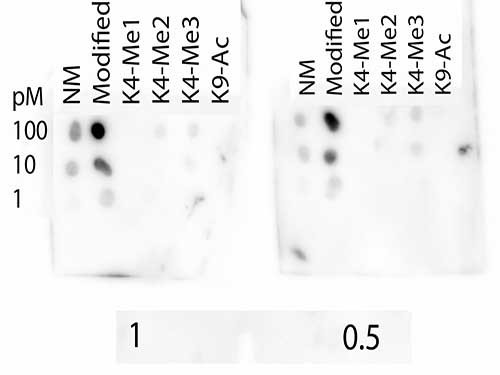Cookie preferences
This website uses cookies, which are necessary for the technical operation of the website and are always set. Other cookies, which increase the comfort when using this website, are used for direct advertising or to facilitate interaction with other websites and social networks, are only set with your consent.
Configuration
Technically required
These cookies are necessary for the basic functions of the shop.
"Allow all cookies" cookie
"Decline all cookies" cookie
CSRF token
Cookie preferences
Currency change
Customer-specific caching
FACT-Finder tracking
Individual prices
Selected shop
Session
Comfort functions
These cookies are used to make the shopping experience even more appealing, for example for the recognition of the visitor.
Note
Show the facebook fanpage in the right blod sidebar
Statistics & Tracking
Affiliate program
Conversion and usertracking via Google Tag Manager
Track device being used
| Item number | Size | Datasheet | Manual | SDS | Delivery time | Quantity | Price |
|---|---|---|---|---|---|---|---|
| 600-401-J98 | 50 µg | - | - |
6 - 10 business days* |
684.00€
|
If you have any questions, please use our Contact Form.
You can also order by e-mail: info@biomol.com
Larger quantity required? Request bulk
You can also order by e-mail: info@biomol.com
Larger quantity required? Request bulk
Anti-Histone H3 [Trimethyl Lys4/ac Lys9] was affinity purified from monospecific antiserum by... more
Product information "Anti-trimethyl-acetyl-Histone H3 (Trimethyl Lys4/ac Lys9)"
Anti-Histone H3 [Trimethyl Lys4/ac Lys9] was affinity purified from monospecific antiserum by immunoaffinity chromatography. A BLAST analysis was used to suggest cross-reactivity with Human, mouse, rat, and C. elegans based on 100% sequence homology. Cross-reactivity with Histone H3 [Trimethyl Lys4/ac Lys9] from other sources has not been determined. The nucleosome is comprised of 146 bp of DNA wrapped around a series of histone proteins arranged as an octamer consisting of 2 copies of histone H2A, H2B, H3 and H4. Within the nucleosome core the histone proteins are covalent modified at specific residues predominantly within the N-terminal tail including lysine (acetylation, methylation, SUMOylation, and ubiquitinylation), arginine methylation and citrullination, serine and threonine phosphorylation, as well as proline isomerization. The lysine side chains can carry up to three methyl groups (mono-, di- and tri- methylated forms) and the arginine side chain can be monomethylated or can be dimethylated as the symmetric or asymmetric forms. The modifications show temporal, disease-specific, and other types of cell-specific regulation and there are specific families of enzymes that regulate the methylation, demethylation, acetylation, deacetylation and other modifications. Research has indicated that whereas the histone mark H3K4Me3 (tri-methyl lysine 4 of histone H3) localizes to gene promoter regions (it is associated with transcriptional activation) other modifications at H3K4 such as monomethyl is present predominantly at enhancer sequences. Specific marks have been shown to be associated with the activation (H3K9Me1, H3K27Me1, and H4K20Me1) or repression (H3K9Me2 and Me3, H3K27Me2 and Me3, and H4K20Me2 and Me3) of genes. Monomethylation of H4 at K20, catalyzed by SET8, is essential to genome replication and stability. Multiple DNA breaks are associated with demethylation at this site, resulting in activation of p53 to avoid mitosis and aberrant chromosomal activity. In mammalian stem cells, Xist expression blocks the formation of H4K20me1, which is one of the first examples of a direct connection between chromatin and stem cell differentiation. Anti-Histone H3 are ideal for researchers interested in Chromatin Research, Epigenetics, Chromatin Modifiers, Histones and Modified Histones, and Phospho Specific research.
| Keywords: | Anti-trimethyl-acetyl-HIST2H3A, Anti-trimethyl-acetyl-Histone H3.2, Anti-trimethyl-acetyl-Histone H3/o, Anti-trimethyl-acetyl-Histone H3/m |
| Supplier: | Rockland Immunochemicals |
| Supplier-Nr: | 600-401-J98 |
Properties
| Application: | IFM, WB |
| Antibody Type: | Polyclonal |
| Conjugate: | No |
| Host: | Rabbit |
| Species reactivity: | human, mouse, rat, c.elegans |
| Immunogen: | synthetic peptide surrounding the K4me3/K9ac site of human Histone H3. |
| Format: | Purified |
Database Information
| KEGG ID : | K11253 | Matching products |
| UniProt ID : | Q71DI3 | Matching products |
| Gene ID | GeneID 126961 | Matching products |
Handling & Safety
| Storage: | -20°C |
| Shipping: | -20°C (International: -20°C) |
Caution
Our products are for laboratory research use only: Not for administration to humans!
Our products are for laboratory research use only: Not for administration to humans!
Information about the product reference will follow.
more
You will get a certificate here
Viewed









![Anti-acetyl-phospho-Histone H3 [ac Lys9/phospho Ser10] Anti-acetyl-phospho-Histone H3 [ac Lys9/phospho Ser10]](https://www.biomol.com/media/image/9f/4e/ed/600-401-P08_200x200.jpg)
![Anti-phospho-dimethyl-Histone H3 [p Thr3, Sym-dimethyl Arg2] Anti-phospho-dimethyl-Histone H3 [p Thr3, Sym-dimethyl Arg2]](https://www.biomol.com/media/image/b7/26/b2/600-401-P14_200x200.jpg)
